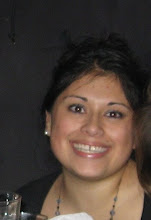The mid-sized hardcover slipped easily under my fingertips, but stood out despite this quick passage. So when I picked up Defending the Cavewoman a week ago, running my fingers along the rippled edge of books found in Chicago’s Harold Washington Library, little did I know that the simple, mindless act of feeling out certain stories by touch would be explained in laymen’s terms, much less creatively so.
But in Defending the Cavewoman and Other Tales of Evolutionary Neurology, Dr. Harold Klawans, M.D. does just that.
Broken down into thirteen anecdotal stories of science, exploration and hypothesis, Klawans takes a serious look at what makes us tick upstairs, but does it in a way that a cavewoman herself could understand. That’s a fair statement too, according to Klawans; she was smarter than you think. It is she we can thank for the relatively few Neanderthal-like men alive today (I said relatively few), she and her selectivity in mating.
Beginning in the preface, Klawans defines several terms used throughout the book with experiential stories, giving the reader the opportunity to associate a vague mouthful of obscure language with something concrete, like the acquisition of Braille reading or why it is chickens run with their heads cut off.
My ten-digit discovery of the book, based on touch, has to do with a sensory understanding of the world, of course, but Klawans gets into the how and why and where of our brains' ability to process such things.
Neuropathy, as he explains much easier than the Wikipedia page you’ll find if you click here, is the loss of our body’s basic senses. Regarding touch, this includes the ability to distinguish between one needle prick and another, millimeters apart on the tip of one’s finger. Klawans, who began his medical career in Minnesota and worked and lived in Chicago until his death in 1999, writes engagingly about the neurology of human development, how it is that we are the way we are today, and what has happened over the years, biologically, physiologically, mentally, that has allowed things to be just so. But he does more than that.
In “I never Read a Movie I liked,” his chapter on reading and the brain, where all this neuropathy stuff becomes applicable, he takes the basic premise of a scripted movie—you know, a silent film with text, or a foreign film, subtitled in English, and using his own personal distaste of the genre, gets into the nuts- and-bolts of why, both biologically, physically, no one should like such films.
Because reading is an evolutionary accident, one associated with “socioeconomic success, which correlates with a decreased birthrate,” we humans have evolved to help ourselves, yet are meanwhile incredibly limited in what our other senses are able to still do. “Reading then, is a biological disadvantage,” he writes. Basically, if we couldn't read, we’d be fucking like crazy, and having babies out of control (like nature intended), not evolving so much so that we destroy the environment. (which nature didn't intend). I won’t go into it here (buy the book!), but the point he makes is that anyone should be able to “feel” their way through a story because the ancient Sumerians used a more pictoral, etched written language; the fact that our brains have evolved to understand words is a neurological miracle. And that’s why we can’t read and watch at the same time.
Or, more specifically, this is why.
You’ll recall that our brains are split in two, left hemisphere, right hemisphere. Because our vision is such that what we see is also split in two, goes into each eye, then crosses over to the opposite side of the brain and then rearranges itself somewhere in the visual cortex in the occipital lobe, the part of our brain that understands vision is busy trying to do that, while the part of our brain that understands language, which is located in the speech cortex, in the left hemisphere, is trying to do that. It’s a lot like WonkaVision, with better results. Or maybe not even that "easy," depending on how much you like to read and watch these sorts of films.
Interspersing his own clinical data and evidence with anecdotal stories of miracle patients, such as Terrence Henessey, of this chapter, and other remarkable characters, Klawans builds a rich file of cases and clients, complete with the humor and flow of a seasoned storyteller. And it’s no wonder; with more than ten titles to his name (over half of those non-fiction) the man has had some serious experience with writing. This too, slightly off- topic, plays a part in his storytelling as he includes tangential stories of other authors (Oliver Wendell Holmes, for instance) who might also be interested in the ways in which the brain works.
For me, of course, the highlight of the book is his way with words and the storytelling capabilities he has woven into the educational lessons shared. If anything, I can only say I wish there were more stories in this volume, but he is a doctor, after all, and the book is dedicated to the craft of healing, not writing. And that, perhaps, is another one of his subtle jokes, perhaps found in chapter 10, “Anticipation,” but certainly peppered throughout. The man knows how to conduct a page-turner.
Subscribe to:
Post Comments (Atom)

No comments:
Post a Comment